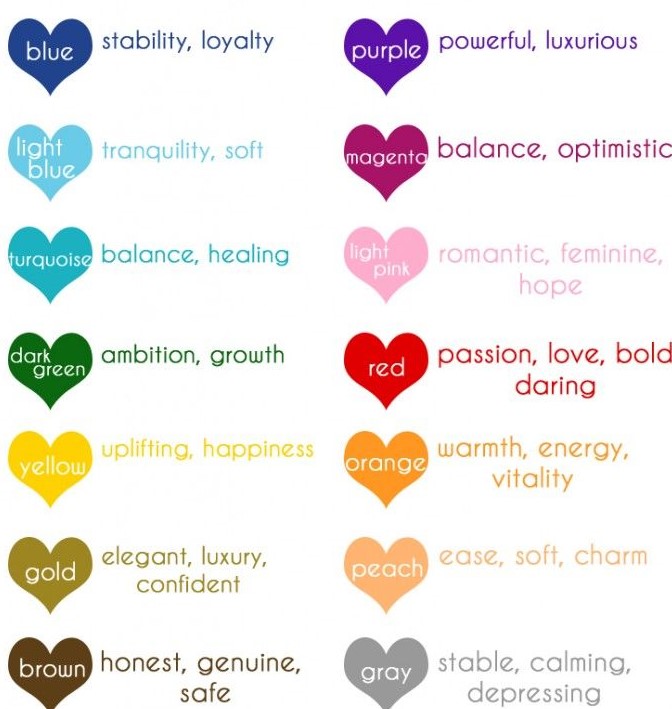Have you ever wondered what the color of a heart symbolizes? From love to heartbreak, the various shades of hearts can convey a range of emotions and meanings. In our daily lives, we often encounter heart emojis or illustrations in different colors, each carrying its own significance. Understanding heart color and their meaning can enrich our emotional vocabulary and enhance our connections with others. In a world where visual communication is paramount, the colors we choose to represent our feelings can open a window into our hearts. Whether you’re sending a message to a loved one or simply expressing your mood, knowing what each heart color signifies can be incredibly beneficial.
In this article, we will explore the fascinating realm of heart colors and their meanings. We will dive into the psychology behind colors and how they influence our emotions and perceptions. By the end of this journey, you'll not only understand the significance of each heart color but also how to use this knowledge to communicate more effectively with those around you.
So, join us as we unveil the secrets of heart color and their meaning, and discover how these vibrant symbols can enrich your emotional expression.
What Does Each Heart Color Mean?
Colors carry different meanings depending on cultural context and personal experiences. The heart, a universal symbol of love, takes on various hues that express specific feelings. Below is a breakdown of common heart colors and their associated meanings:
- Red Heart: Passionate love, romance, and strong emotions.
- Pink Heart: Affection, tenderness, and sweet love.
- Blue Heart: Trust, loyalty, and calmness.
- Green Heart: Growth, harmony, and friendship.
- Yellow Heart: Happiness, joy, and friendship.
- Purple Heart: Compassion, understanding, and empathy.
- Black Heart: Sadness, grief, or dark humor.
- White Heart: Purity, innocence, and new beginnings.
Why Do We Use Heart Colors in Communication?
The use of heart colors in communication stems from our innate desire to express complex emotions in a simple, relatable manner. Heart colors provide a visual shorthand for feelings that might be difficult to articulate. For instance, sending a red heart can quickly convey deep love, while a black heart might indicate sadness or irony. This method of communication has become especially popular in digital communication, where emojis replace words.
How Do Heart Colors Influence Relationships?
Understanding heart color and their meaning can significantly impact our relationships. By recognizing the emotional undertones of different heart colors, we can navigate our interactions more thoughtfully. For example, sending a green heart can signify a desire for growth in a friendship, while a yellow heart might express joy and gratitude. Being attuned to these colors can help foster deeper connections and enhance emotional exchanges.
Are There Cultural Differences in Heart Color Meanings?
Indeed, heart colors can have different meanings across cultures. While a red heart universally signifies love and passion, other colors can evoke varying emotions based on cultural context. For instance:
- In Western cultures: Red is primarily associated with romantic love, while black can signify mourning.
- In Eastern cultures: White might be associated with mourning instead of purity.
- In some African cultures: Green may symbolize fertility and prosperity.
Understanding these cultural nuances is crucial for effective communication, especially in diverse environments.
How Can You Use Heart Colors to Express Yourself?
Using heart colors to express yourself can be a fun and impactful way to communicate your feelings. Here are some tips to incorporate heart colors into your everyday interactions:
- Choose Colors Wisely: Select heart colors that align with your emotions for clarity.
- Combine Colors: Use multiple heart colors in a single message to convey complex feelings.
- Be Mindful of Context: Consider your audience and the cultural meanings behind colors.
- Engage in Conversations: Ask others about their favorite heart colors and what they mean to them.
Can Heart Colors Change Over Time?
Just as our emotions can evolve, so too can the meanings we associate with heart colors. A heart that once symbolized love may later represent nostalgia or heartache. It’s essential to recognize that personal experiences shape our understanding of heart color and their meaning. For instance, a pink heart may initially represent a budding romance but could later signify a cherished friendship.
What Are Some Creative Ways to Incorporate Heart Colors in Daily Life?
Incorporating heart colors into your daily life can add a splash of creativity and emotional awareness. Here are some suggestions:
- Art and Crafts: Create artworks that represent your emotions using different heart colors.
- Fashion: Wear accessories in heart colors that resonate with your feelings for the day.
- Social Media: Use heart emojis in your posts to express your current mood or experiences.
- Journaling: Write about your emotions using heart colors to symbolize different feelings.
Conclusion: Embrace the Language of Heart Colors
In conclusion, understanding heart color and their meaning can enhance our emotional communication and relationships. By learning the significance of different heart colors, we can express ourselves more authentically and connect with others on a deeper level. Whether you’re sending a message to a friend or exploring your own emotional landscape, embrace the vibrant language of heart colors and let your feelings shine through.
Unforgettable Survival Movies Of 2019: A Journey Through Adversity
Exploring The Wealth Of John Wagner: A Deep Dive Into His Net Worth
Unveiling The Life And Journey Of Laura Hopper


